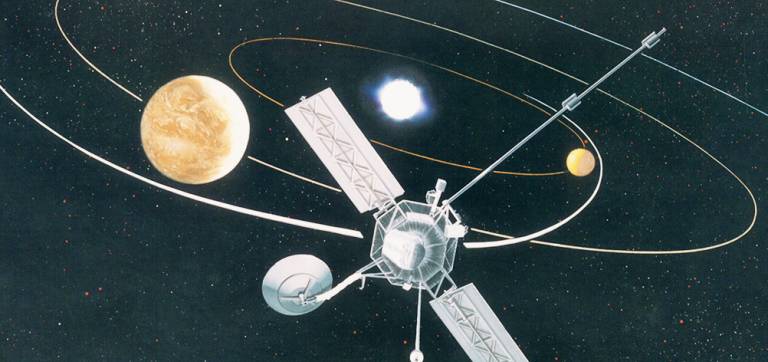The shocking truth about solar eruptions
7 October 2013
The Sun gives light and heat that makes life possible on
Earth. That said, our nearest star can have more sinister effects, sometimes
unleashing huge eruptions of hot gas, called coronal mass ejections (CMEs),
which carry billions of tons of matter travelling at millions of kilometres an
hour into space. These storms can be accompanied by solar radio bursts, and if
they head in Earth's direction, they can cause damaging effects on many of the
technologies that we rely on in our everyday lives, such as communications
satellites and mobile phone networks.
Despite decades of study, the precise link between coronal mass ejections and a range of other phenomena including radio bursts of several kinds and ultraviolet pulses has remained unclear. However a new study bringing together researchers in Ireland, the US and UCL Mullard Space Science Laboratory's David Long, has shed new light on the matter, suggesting that these phenomena share a common cause: huge shock waves in the solar atmosphere, which are driven by coronal mass ejections.
"This was a really unique set of observations which provides
a new insight into how these phenomena are related," says Long.
The team's work was based in part on space-based observations from NASA's Stereo and Solar Dynamics Observatory probes. Alongside this, the team established a radio observatory in Birr Castle in Ireland, site of a historic observatory of the late 19th century, to monitor the solar radio bursts.
The findings, which were published online this week in Nature Physics, show that coronal mass ejections create huge shock waves that race through the solar atmosphere at millions of kilometres per hours. As they do, they can accelerate electrons to huge energies, which then produce radio waves. Long's contribution to the study was to examine the nature of these shock waves.
The results of the group's study not only give an insight into the fundamental physics of massive explosions on the Sun, but enable us to better understand how the Sun affects the Earth and potentially its impacts on our daily lives.
Notes
- The research appears in a paper published in the journal Nature Physics , entitled "Quasiperiodic acceleration of electrons by a plasmoid-driven shock in the solar atmosphere"
Related links
-
UCL Mullard Space Science Laboratory
- Paper in Nature Physics
-
Birr Castle
- Trinity College Dublin press release
High-resolution image
This image is in the public domain and can be used without restriction
Researcher profiles
Science contact
David Long
UCL Mullard Space Science Laboratory
01483 204 268
david.long@ucl.ac.uk
Media contact
Oli Usher
UCL Faculty of Mathematical and Physical Sciences
020 7679 7964
o.usher@ucl.ac.uk
 Close
Close




